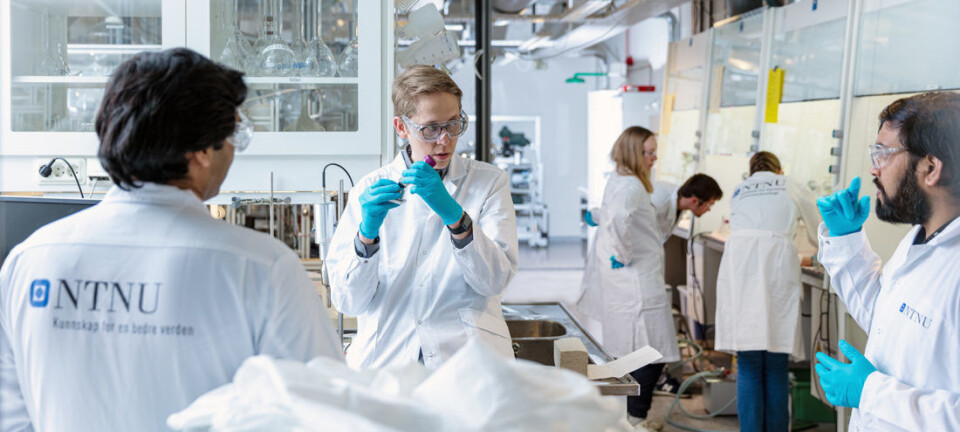This article is produced and financed by NTNU Norwegian University of Science and Technology - read more

A daily 10-minute training session using an app could reduce migraine attacks
With body sensors feeding the app information during the training sessions combined with a headache diary, researchers hope the new migraine app will be able to predict and prevent migraine attacks.
One in seven people suffer from migraines and one in a hundred experience chronic headaches. Painful headaches can destroy a person's social life and interfere with their ability to be a part of the workforce. Traditional migraine medication helps some individuals but has frequent side effects.
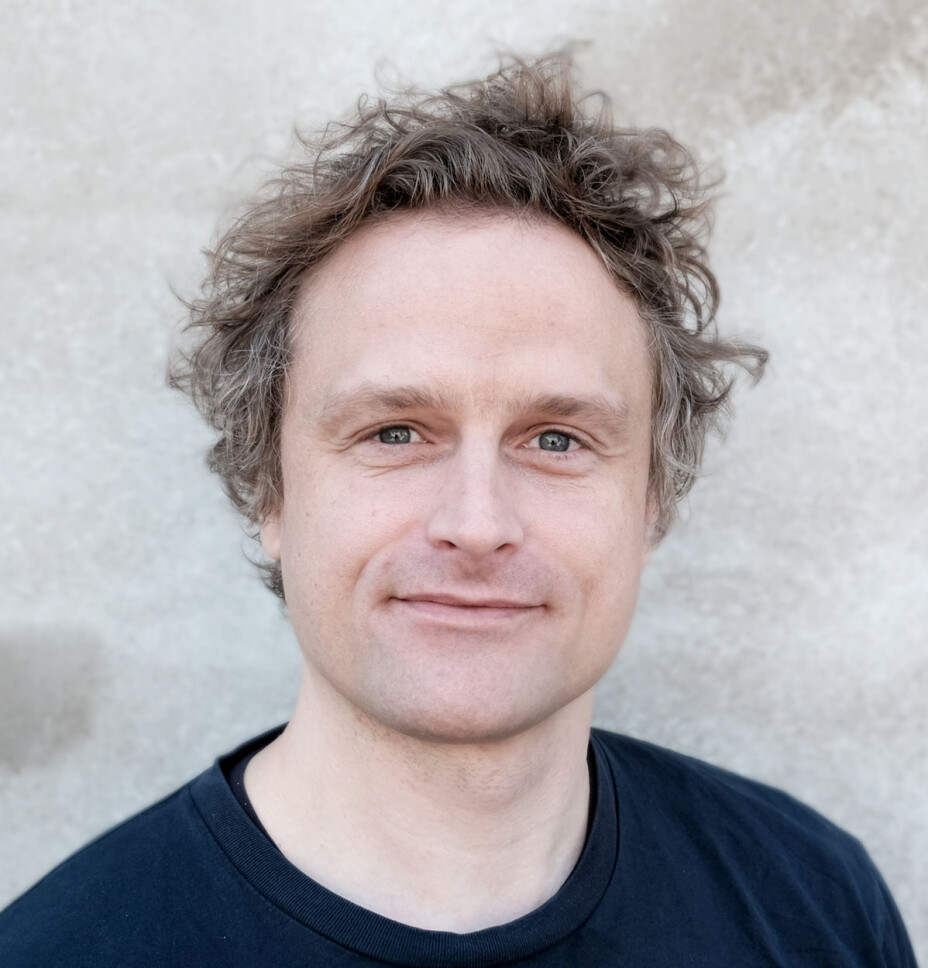
Now an app is being developed in NTNU’s research community and St. Olav's Hospital to treat migraine – without the use of medication.
“Inappropriate activation of the autonomic nervous system, for example due to stress, can trigger migraine attacks,” says Alexander Olsen. He is an associate professor in NTNU’s Department of Psychology.
“When the nervous system is activated, it is reflected in changes in heart rate, muscle tension, and finger temperature. Usually, we don't have direct access to these signals, but if we monitor them with sensors, we can effectively train ourselves to control them,” he says.
Body sensors and headache diary
The app, which is under development at the Oslo Science Park, receives data on a person’s physical processes from two body sensors. The app also contains a headache diary where the user records medication use and the duration, strength and location of the migraines.
“We built in artificial intelligence so that the app can adapt to the individual user,” says Cathrine Ro Heuch, general manager of the start-up company Nordic Brain Tech.
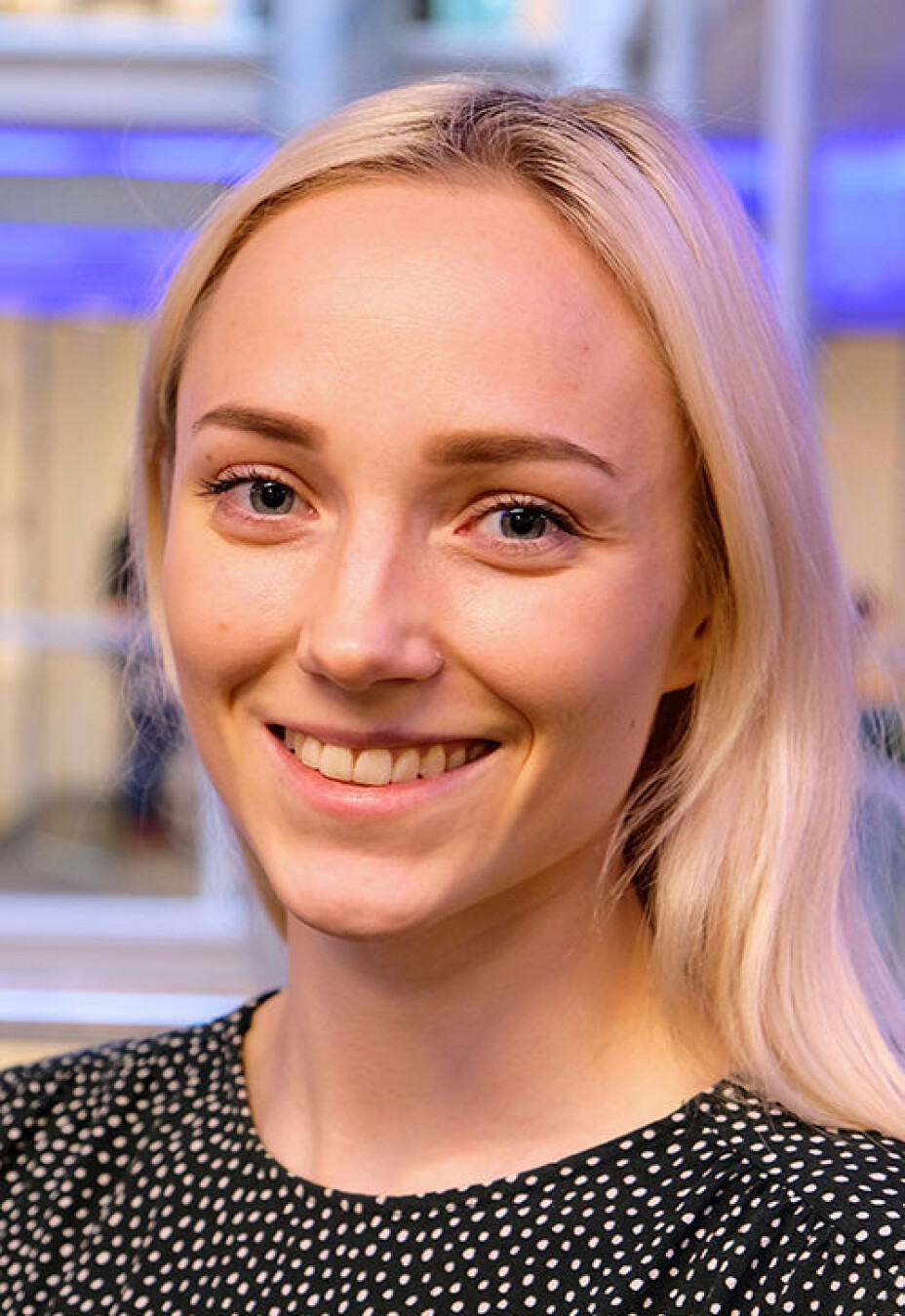
“The artificial intelligence component compares the information about the body's signals with the migraine diary and provides the patient with feedback to optimize their training. We also added a game element so that the user earns a score between 0 and 100 for their training.
The goal is for the app to eventually be able to predict attacks, their duration and intensity.
Ten minutes a day
To activate the app, the user does a ten minute training session every day. A sensor is placed on the trapezius muscle in the neck to measure muscle tension, and another one is put on a finger to measure heart rate and temperature.
The sensors send the data wirelessly to the user's smartphone, which displays them on the screen. A high heart rate, increased muscle tension and low finger temperature are typical stress reactions that can trigger migraines.
The idea is for patients to learn the connection between bodily signals and the feeling they have in their body.
The goal is for the person to have immediate, and gradually more lasting, effects from the training that help prevent new attacks.
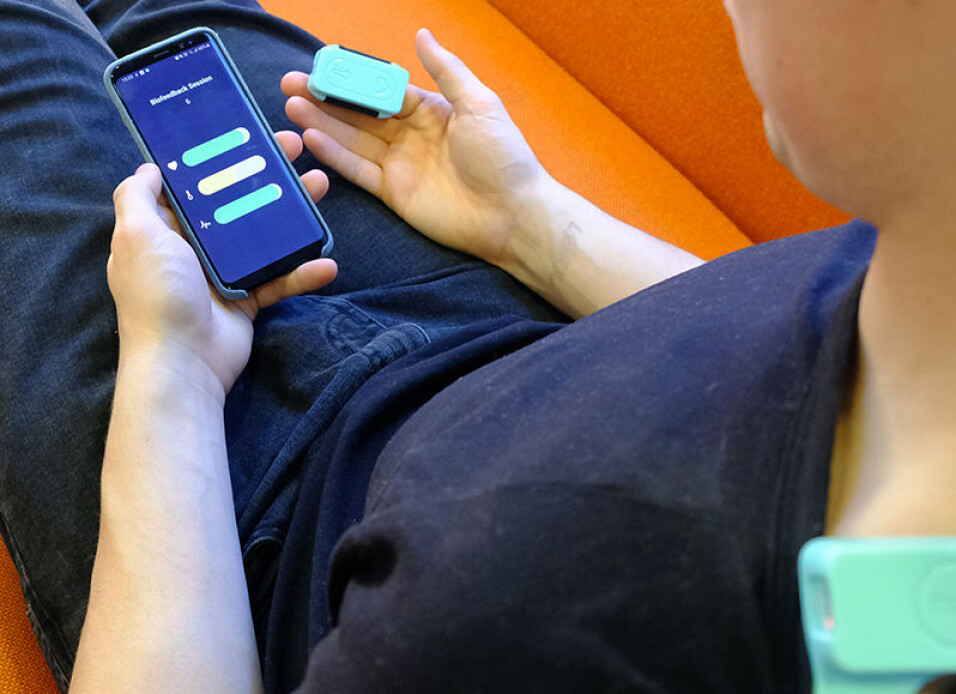
Stress triggers migraines
Professor Erling Andreas Tronvik at the National Competence Center for Headaches at St. Olav's Hospital has been key to the medical expertise behind the app.
“Stress can trigger migraine attacks. Not only negative stress, but also positive stress, like looking forward to a party or holiday. We know that the autonomic nervous system can be trained to reduce migraine attacks. The app tries to take advantage of this ability,” says Tronvik.
In terms of the method’s effectiveness, he notes that in the United States, treatment combines showing physiological measurements to the patient with having a therapist present. Several studies show that the method is as effective as medication.
“It would be a big step forward if we were able to achieve equally good results by using the method at home with an app and artificial intelligence instead of a therapist,” Tronvik says.
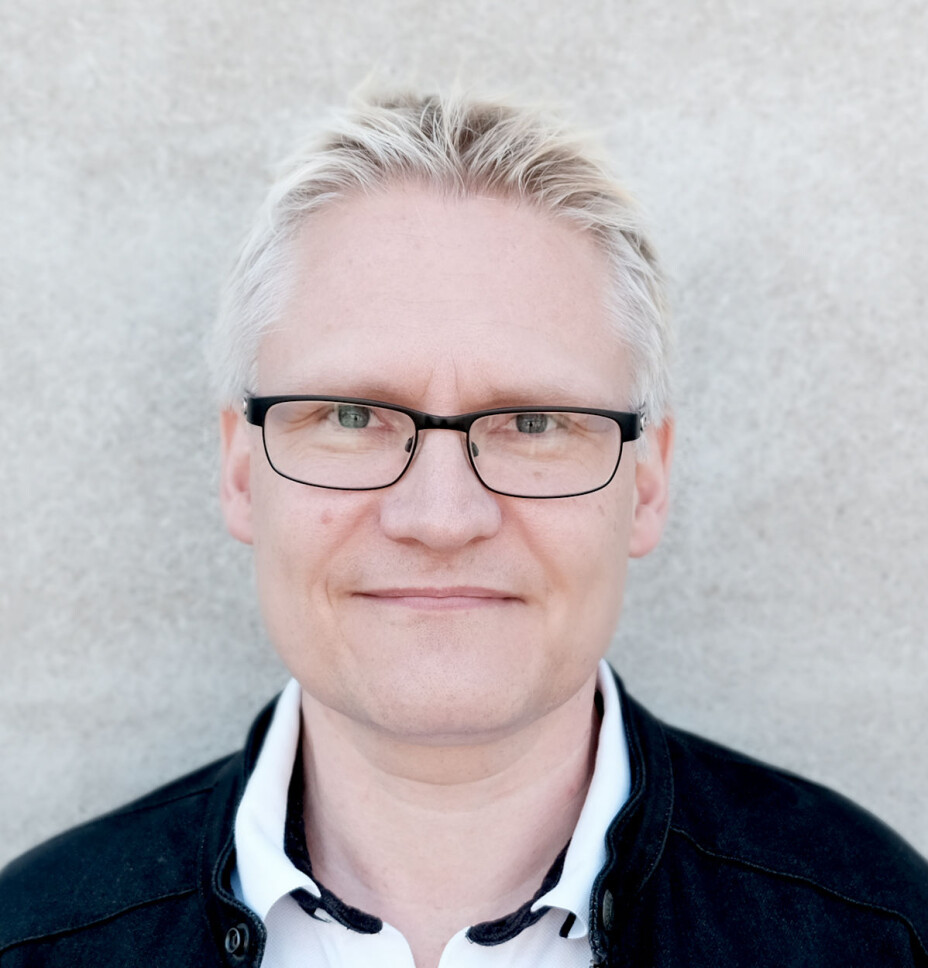
The app should be the first treatment
Using the app in combination with medication is also an option. Today's medications can reduce pain by about 30 per cent on average and decrease the number of attacks a month by two or three. This would be a significant improvement for the patient.
However, doctors are reluctant to prescribe these medications for children and adolescents.
“I think it makes sense to try the app solution as the first treatment for children and young people – if the method works as well as we’re hoping it will,” says Tronvik.
The professor believes that the reason the Norwegian health care system doesn’t offer migraine treatment using physiological measurements and a therapist is that the method is too resource intensive.
“If patients can do this at home whenever it works for them, for ten minutes a day, it makes it so much easier and motivating to do the treatment,” he says.
The traditional preventive medications used to treat migraines are heart medicines, epilepsy medicines and antidepressants. CGRP inhibitors, a new preventive migraine option, are reserved for adults suffering from chronic migraines who do not respond to other treatment.
Especially for the young
A new study is currently underway that is testing the app-therapy at St. Olav's Hospital and Oslo University Hospital, Ullevål.

Thirty children and adolescents are receiving data about their physical processes on the app, and a control group of 10 participants are getting fake data on their app.
The feedback that the participating youth are giving the researchers is that they have become better at recognizing their body's signals. The results of the study will be ready by summer. The researchers hope to then be able to start larger studies.
Interesting for other disorders
NTNU PhD candidate Anker Stubberud has combined medicine and technology in his dissertation that forms the basis for the migraine app. Stubberud took his doctorate in the research track during his medical education. He is excited about the study that is now nearing completion.
“The study can give us a clue about how well an app can replace a therapist,” he says.
“If the app proves to work as well as we’re hoping, we think a good next step would be to try it out on other disorders that are linked to the regulation of the autonomic nervous system, like anxiety and depression,” says Stubberud.
NTNU Technology Transfer is part owner of Nordic Brain Tech. The plan is for the app to be ready in two years. In the meantime, it will be further developed and will go through the EU approval process for medical devices.








